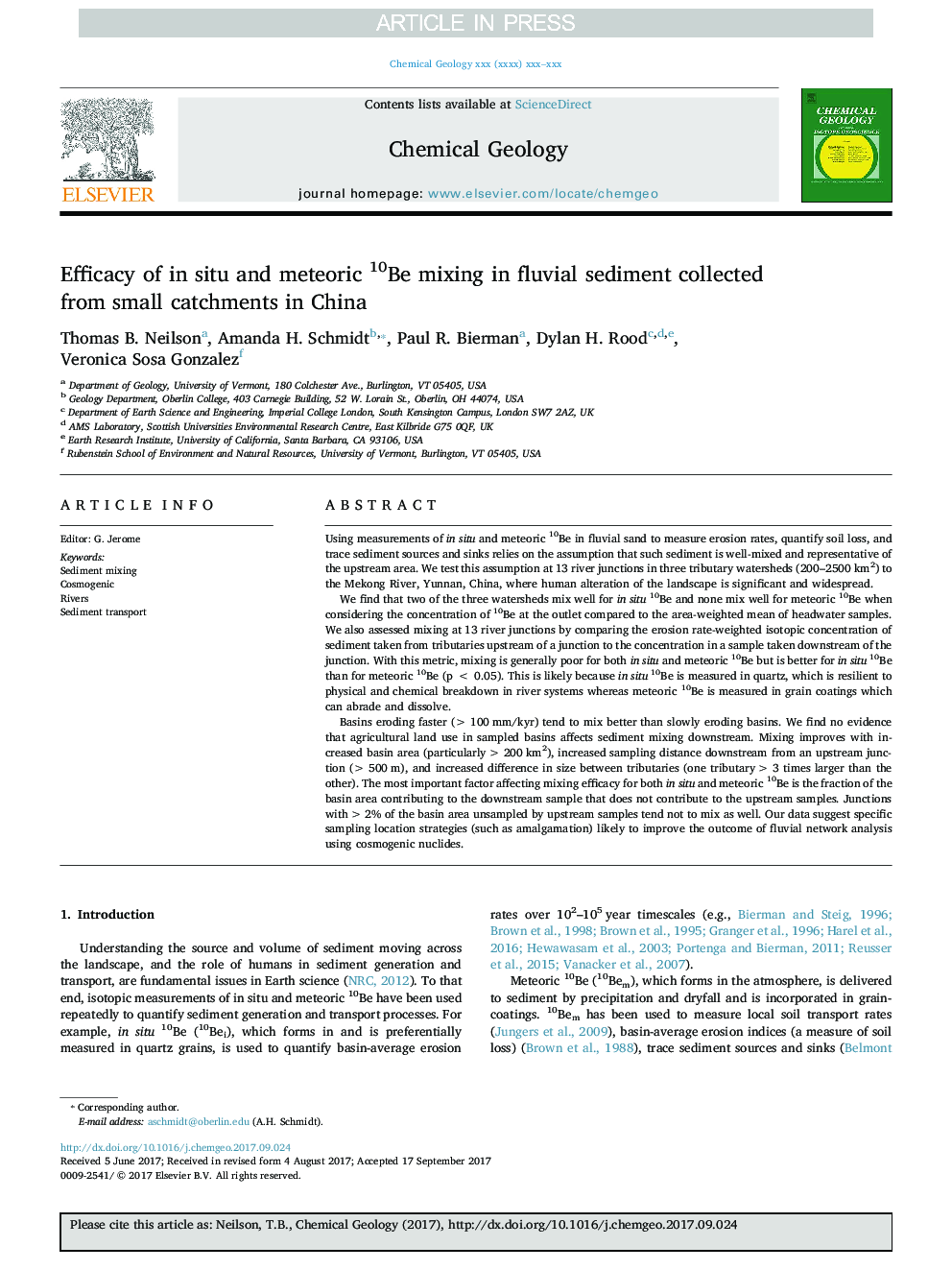| Article ID | Journal | Published Year | Pages | File Type |
|---|---|---|---|---|
| 8910552 | Chemical Geology | 2017 | 12 Pages |
Abstract
Basins eroding faster (>Â 100Â mm/kyr) tend to mix better than slowly eroding basins. We find no evidence that agricultural land use in sampled basins affects sediment mixing downstream. Mixing improves with increased basin area (particularly >Â 200Â km2), increased sampling distance downstream from an upstream junction (>Â 500Â m), and increased difference in size between tributaries (one tributary >Â 3 times larger than the other). The most important factor affecting mixing efficacy for both in situ and meteoric 10Be is the fraction of the basin area contributing to the downstream sample that does not contribute to the upstream samples. Junctions with >Â 2% of the basin area unsampled by upstream samples tend not to mix as well. Our data suggest specific sampling location strategies (such as amalgamation) likely to improve the outcome of fluvial network analysis using cosmogenic nuclides.
Related Topics
Physical Sciences and Engineering
Earth and Planetary Sciences
Geochemistry and Petrology
Authors
Thomas B. Neilson, Amanda H. Schmidt, Paul R. Bierman, Dylan H. Rood, Veronica Sosa Gonzalez,
